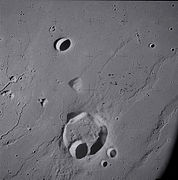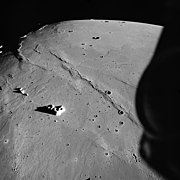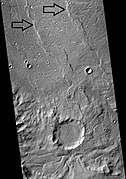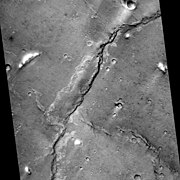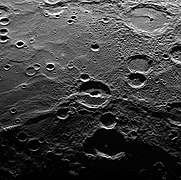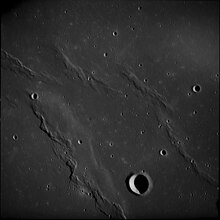
A wrinkle ridge is a type of feature commonly found on lunar maria, or basalt plains. These features are low, sinuous ridges formed on the mare surface that can extend for up to several hundred kilometers. Wrinkle ridges are tectonic features created after the lava cooled and solidified. They frequently outline ring structures buried within the mare, follow circular patterns outlining the mare, or intersect protruding peaks. They are sometimes called veins due to their resemblance to the veins that protrude from beneath the skin.
Wrinkle ridges are named with the Latin designation dorsum (plural dorsa). The standard IAU nomenclature uses the names of people (generally scientists) to identify wrinkle ridges on the Moon. For example, the Dorsa Burnet are named for Thomas Burnet, and the Dorsum Owen is named after George Owen of Henllys.
Wrinkle ridges can also be found on Mars, for example in Chryse Planitia, on several of the asteroids that have been visited by spacecraft, on Mercury, and certain moons of Jupiter and Saturn. Although several hypotheses have been advanced as causes of wrinkle ridges, today they are generally considered to be of tectonic origin. They involve folding and faulting.[1] If correctly interpreted as thrust faults, where a rupture occurs and one side of the rupture is pushed on top of the other, they are evidence of compressional stress in planetary crust.[2]
